Guide to the NHSScotland Design Assessment Process (NDAP)
An introduction to the NHS Scotland Design Assessment Process (NDAP) and how we at Architecture and Design Scotland can help.
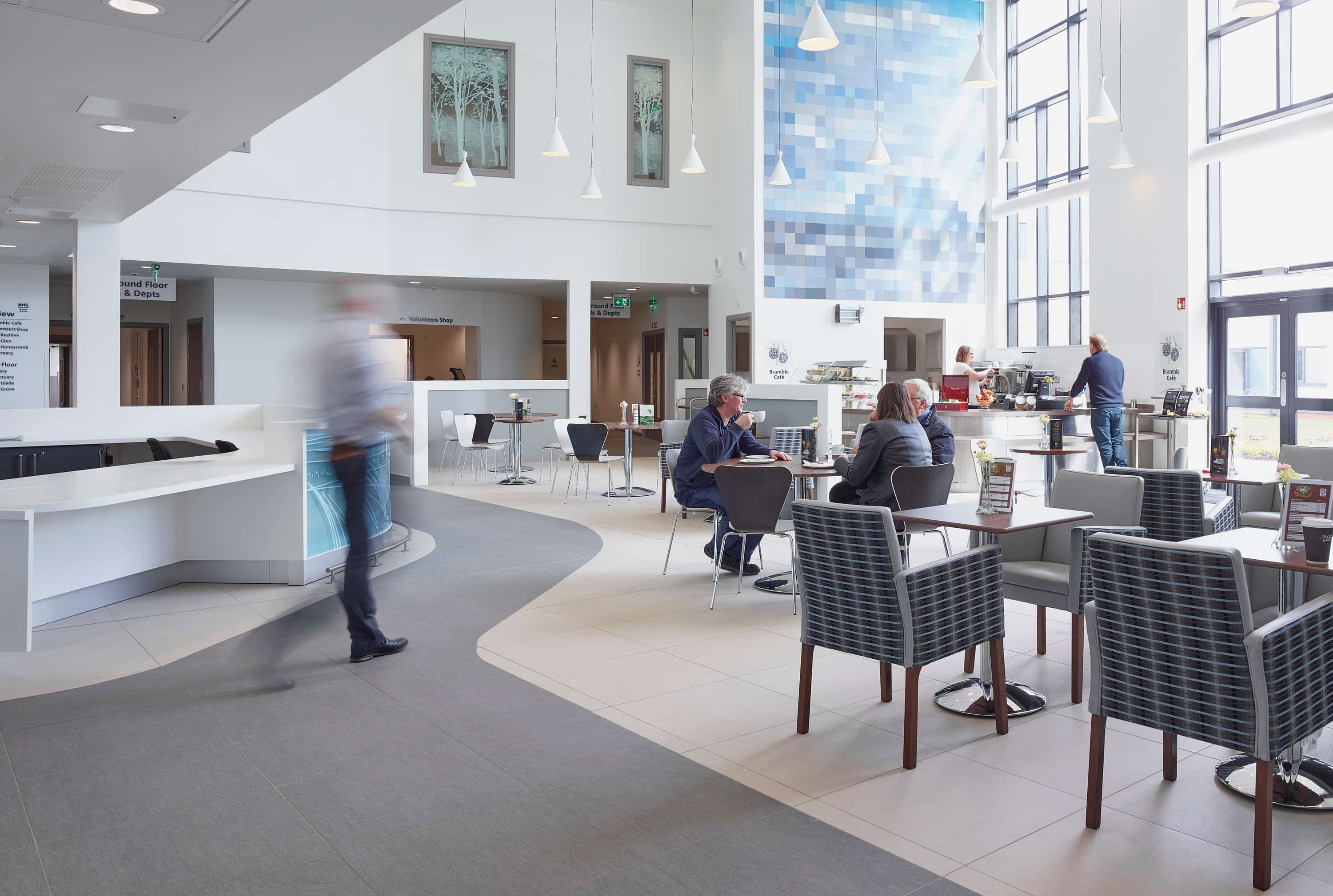
The NHSScotland Design Assessment Process (NDAP) was introduced in 2010 to help our health boards identify a clear path between the business objectives for a project and the mandatory qualities of the building development.
In this guide you can expect to find information on:
- support for preparing a Scottish Captial Investment Manual (SCIM) design statement
- Initial Agreement (IA) formal report
- support for outline business case (OBC) development
- Outline Business Case (OBC) formal report
- support for Full Business Case (FBC) development
- Full Business Case (FBC) formal report
Is the NDAP mandatory for all projects?
The NDAP is mandatory for all projects over the commissioning board’s delegated authority. It requires you to produce formal reporting in the run-up to each stage of the development process.
We encourage our client teams to discuss proposals during their development to identify and resolve issues early before formal reporting.
NDAP process
Our team at Architecture and Design Scotland and Health Facilities Scotland (HFS) created the NDAP guide to help you get the most out of your healthcare development project. You can expect to find the aim of each stage of the development process and information on what you’ll need to do to establish your vision of the build.
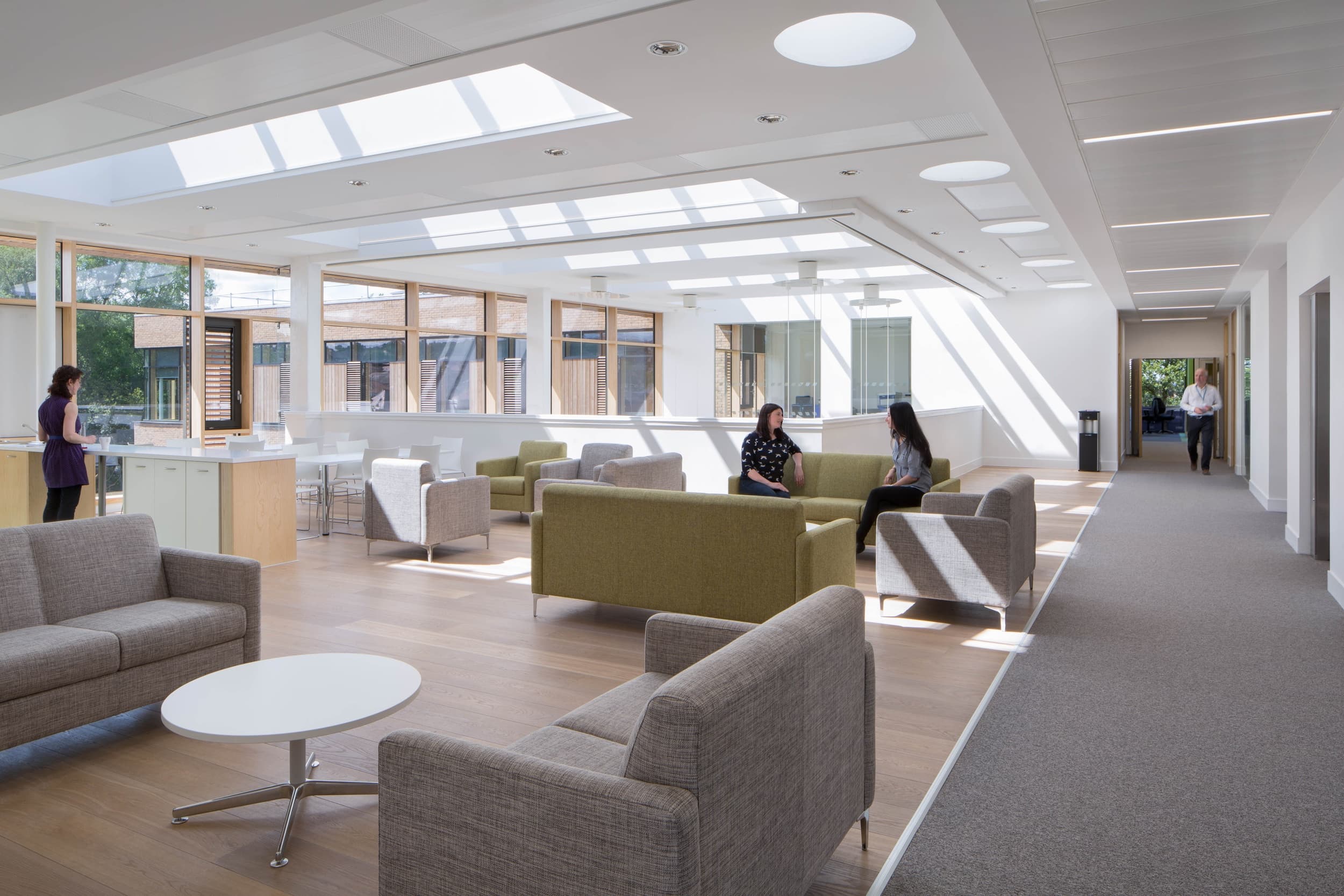
Support for preparing an SCIM design statement
A project should always start with a view of how services in an area needs to change. If these changes require a development of new or substantially altered building an IA will need to describe the strategic needs, objectives and potential cost.
For more information on SCIM design statements click on the link below.
Image credit: Hoskins Architect
SCIM design statements
New or substantially refurbished health development projects require a SCIM design statement. It’s a document involving project specific design standards developed in the pre-Initial Agreement (IA) which is incorporated into the project’s governance.
The IA should include a strategic design brief for the project. This brief is set out in a 'SCIM design statement' which describes the key attributes and qualities the facility should include to meet the needs of patients, staff, and visitors. It should also address how the investment in the community can realise broader benefits.
Engagement with a variety of key stakeholders can help you develop a comprehensive design statement. Key stakeholders can include clinicians, facilities managers and patent representatives.
Including their viewpoint can enable you to gain a collective perspective of the new services modes required. It can also describe the ‘non-negotiable’ attributes for the facility, forming the basis for assessing the design during its development.
At Architecture and Design Scotland, we can help facilitate these sessions and offer web-based resources which can help you understand how others have tackled similar issues. These resources can provide potential benchmarks and a view of what success can look like.
At the end of the process, your client team should have a design statement, setting a brief that works for you and your needs. Incorporated into the IA, this brief is used to help inform and inspire your stakeholders—capturing the benefits and brighter future required to realise the vision being established.
Depending on the scale and complexity of the project, and availability of stakeholders, it can take between one to two months to develop a design statement and have it signed off by the project team. The process includes:
- approaching Architecture and Design Scotland
- issue draft business objectives
- engage and gather the right stakeholders
- developing design objectives through two workshops: Non-negotiables and Quality benchmarking with Pulse
- stakeholder review
- project team refine design statement
- develop self-assessment process
- informal feedback (where required)
- finalise design statement and integrate into IA
This process is important as once the design statement is completed and incorporated into an approved IA, it forms part of the Board’s commitment to Government on the nature and quality of proposed facility, and the basis for future design assessments by NDAP.
It can also provide informal feedback on the developing document throughout this process to provide an assurance of acceptability at the formal IA review point.
Initial Agreement (IA) formal report
A formal report is required from NDAP prior to the consideration of the IA. In this report you’ll need to address the state of project (supported or unsupported by NDAP). Capital Investment Group (CIG) has made it clear that they don’t expect to approve business cases that are unsupported by NDAP.
This formal stage process is critical to your overall design and at this stage, we look for the following:
- Clear line of sight between the business objectives and the 'non-negotiable' design objectives.
- That the difficult aspects of briefing – such as flexibility in use, benefits of co-location, etc., – have been tackled and a direction of travel is described.
- Benchmarks that relate to the ‘non-negotiables’ which are based on recent and relevant good practice.
- A clear view of how the development can benefit the wider community.
- A ‘self-assessment process’ that will support delivery.
- Embeds the design statement into the IA and project governance clearly and simply, without undue duplication in the assessment process or design objectives.
- NDAP ask for two weeks’ notice of the submission and a further two weeks to respond. Notification and submission forms and criteria are available here. These should be sent to HFS and copied to A&DS to accelerate the process. Submission of draft information nearing completion is acceptable—the process does not require a delay in the development and sign-off of the document.
We may ask you to provide changes or evidence from the board before we verify support to CIG if there are aspects of concern not already addressed at this point. You should use the report we provide to inform the approval of the IA by the board and subsequently by CIG.

Support for Outline Business Case (OBC) development
During this stage we (Architecture and Design Scotland and HFS) encourage project teams to get support and feedback on the design development—to identify and resolve issues well in advance of formal reporting at OBC. We are here to help and can tailor support, based on the project and your team’s needs.
Image credit: NORR/Archial Ingenium
Given that each project is unique, there is no formal set structure for engagement at this stage. A note of the anticipated 'formal' engagement will be included in the IA stage report.
Support can include a range from early advice and guidance on site selection to informal feedback on developing design options. Informal feedback is particularly helpful if a decision might affect the performance of the design against key objectives.
We also provide more formal reports though Desktop or Panel Assessments to allow for inclusion in planning processes that may run ahead of the OBC stage. For example, if your client team is establishing a masterplan with Planning Permission in Principle.
Assistance at this stage aims to set the right overall design strategy regarding:
- location in the community.
- site strategy, which includes transport/parking/routes, useable green space and response to the local built form.
- building circulation routes for patients, staff FM etc.
- orientation of major elements for daylight/privacy/views.
- sustainability strategy in terms of natural light, ventilation and approach to mechanical and electrical services (M&E). HFS can assist in establishing the target BREEAM scoring etc.
- any feedback and reports provided in this manner can be wrapped into formal reporting at OBC stage. This early engagement ensures there are no surprises at the formal review point.
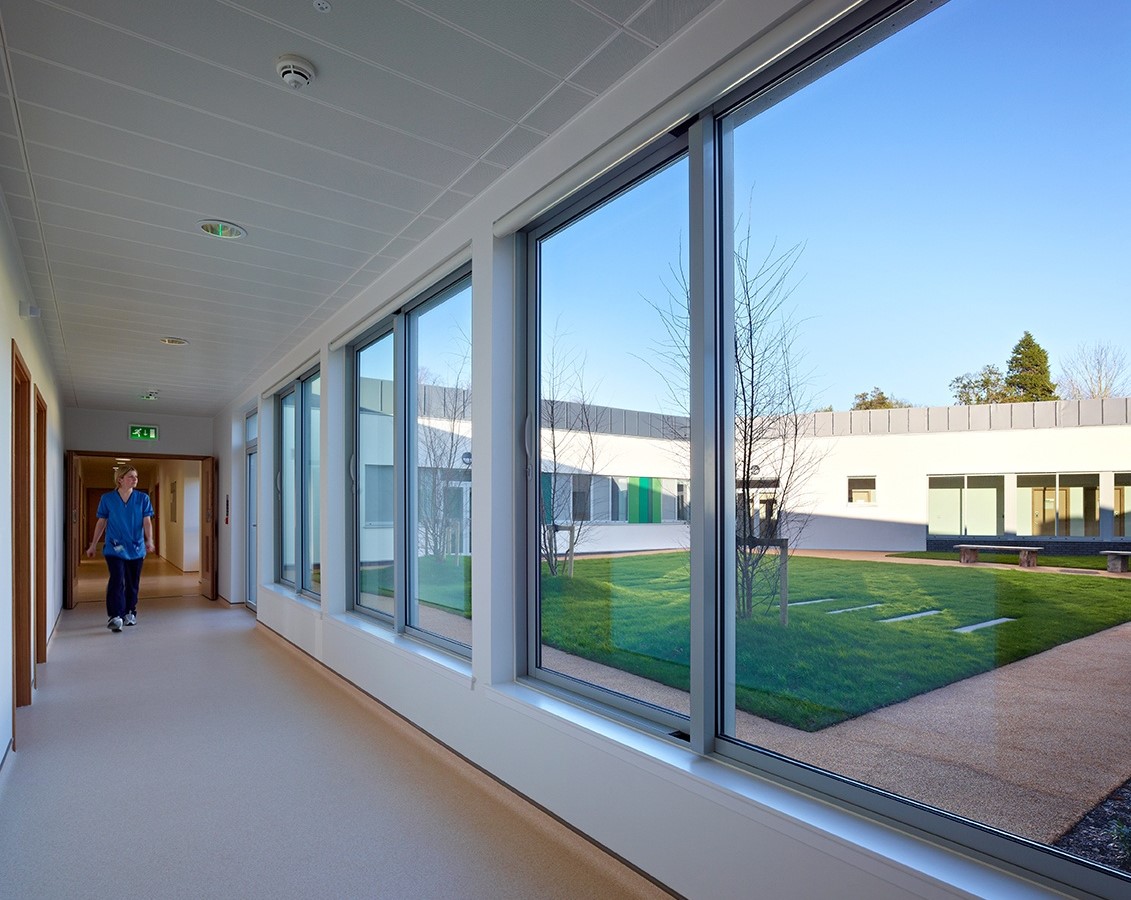
"The design statement helps you deliver the vision. A vision is a very difficult thing to encapsulate; actually having something illustrated and written down gives you a language and something you can share easily."
- Dr Safia Qureshi, Project Director
Outline Business Case (OBC) formal report
A formal report is required from NDAP prior to consideration of the OBC by key decision makers. This report must state if the project is supported or not, and CIG have made it clear that they do not expect to approve business cases that are unsupported by NDAP.
Therefore, it is important that this formal stage progresses smoothly. At OBC stage, we look for the following:
- Building design concept (be that reference design for an NPD project or proposed design for any other project) exhibits the qualities described in the board's design statement.
- Application of correct healthcare design guidance to the project and an understanding of any derogations to the guidance.
- Building diagram demonstrates a sensible approach to fire and escape.
- Approach to sustainability is well understood and the development is on target to reach the required BREEAM score.
- Design risks are understood and well managed into the next stage of development – particularly where NPD procurement is proposed, and the aspects above will largely be addressed through the subsequent bidding stage.
- Proposed development sits well within its setting and the approach to planning is well handled.
- Opportunities of the site and design are maximised both for the specific development and wider agendas, such as health promotion and biodiversity.
- NDAP ask for two weeks’ notice of the submission and a further two to three weeks to respond. Though, this can take longer, particularly if there are several aspects that remain unresolved (or not evidenced) from the previous stage. Meetings will become necessary to discuss and agree on approaches to address these matters. Notification and submission forms and criteria are available here. These should be sent to HFS and copied to A&DS to accelerate the process.
You (and potentially your design team) will generally be consulted during the assessment period to ensure the design is understood – though this may not be necessary if the dialogue is carried out in the earlier informal stage.
We may ask you to provide changes or evidence from the board before we verify support to CIG if there are aspects of concern not already addressed at this point. The report may include recommendations you'll need to release early in the next stage.
You should use the report we provide to inform the approval of the OBC by the board and subsequently by CIG. You can also use it to provide evidence of our conclusion in the approach to the planning authority.

Support during Full Business Case (FBC) development
Like OBC development, there is no set structure for support during FBC development. However, you can anticipate the nature and timing of the engagement through the OBC response on what to expect.
Image credit: David Grandorge
An early engagement will likely address the recommendations provided from the OBC stage. Failing to address these could result in an unsupported project at FBC.
Advice, guidance, and feedback in this stage will often be more technical. Additionally, if your project uses NPD procurement, the developing bidder's designs may also address aspects such as site and building strategy.
There is also scope for NDAP to offer other guidance and support if your project team feels it would be beneficial. NDAP can provide you with feedback and reports to include in the formal reporting at the FBC stage. This early engagement ensures there are no surprises at the formal review point.
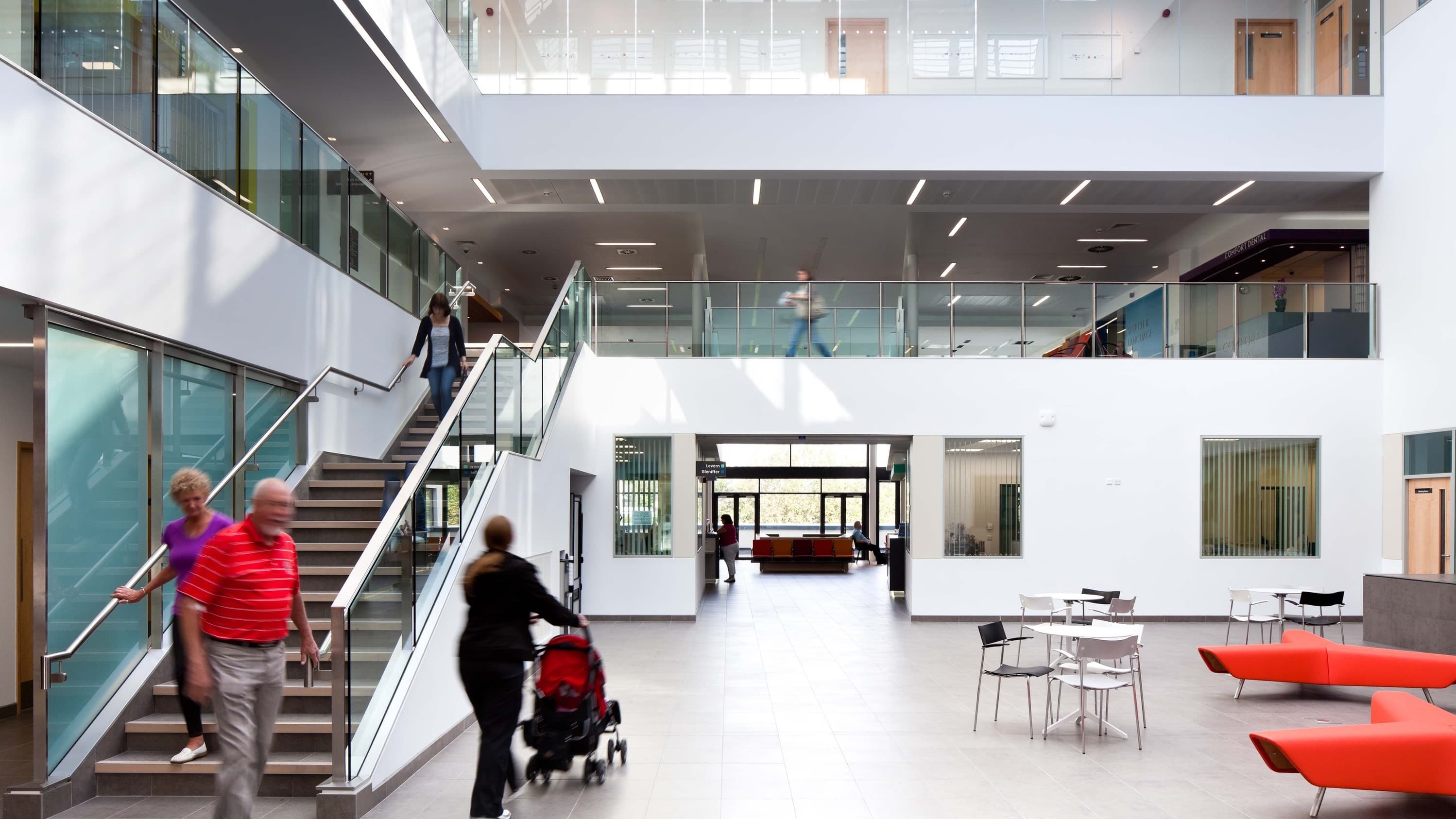
Full Business Case formal (FBC) report
Before key decision-makers can consider the FBC, you'll need to develop the formal report from NDAP. In this report, you'll need to address the state of the project (supported or unsupported by NDAP).
CIG has made it clear that they do not expect to approve business cases that are unsupported by NDAP. Therefore, it is important that this formal stage progresses smoothly.
At FBC stage, we (HFS and Architecture and Design Scotland) look for the following:
- Building design exhibits the qualities described in the board's design statement and FBC addresses recommendations noted at OBC.
- Application of correct healthcare design guidance to the project and an understanding of any derogations to the guidance.
- Development is on target to reach the required BREEAM score and has a low anticipated energy use. We are now looking at the Building Regulation UK Part L report (BRUKL), which describes the likely performance in greater detail.
- NDAP ask for two weeks’ notice of the submission and a further two to three weeks to respond. Though, this can take longer, particularly if there are several aspects that remain unresolved (or not evidenced) from the previous stage. Meetings will become necessary to discuss and agree on approaches to address these matters. Notification and submission forms and criteria are available here. These should be sent to HFS and copied to A&DS to accelerate the process. Submission of draft information nearing completion is perfectly acceptable – the process does not require a delay in the development and sign-off of the document.
We will generally consult you, and potentially your design team, during the assessment period to ensure the design is understood. However, this may not be necessary if we've carried out the dialogue in the earlier informal stage.
We may ask you to provide changes or evidence from the board before we verify support to CIG if there are aspects of concern not already addressed at this point.
You should use the report we provide to inform the approval of the FBC by the board and subsequently by CIG.
Inspiring health and social care facilities
We can help you navigate the complexities of designing for healthcare facilities in a variety of ways. Before getting in touch with a member of our team, we advice you to explore our Pulse Image and Project Galleries below to look through inspiring healthcare development projects.
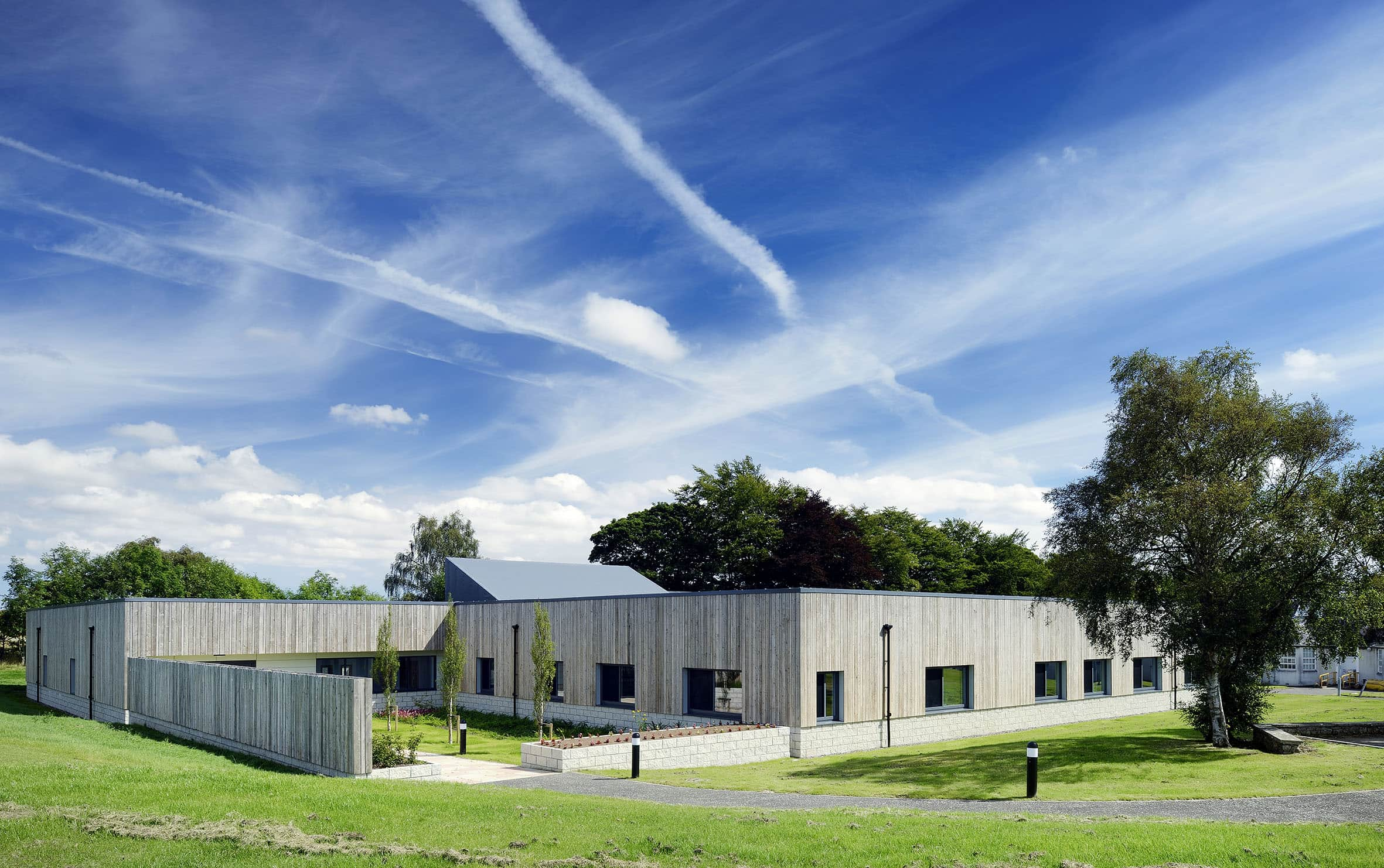
Pulse project gallery
Our pulse project gallery includes a catalogue of various health and social care facilities. It includes examples of design statements and further information on the development.
Image credit: Nigel Rigden

Pulse image gallery
Our pulse image gallery includes a catalogue of images from different types of health and social care facilities, which you can use for an SCIM design statement.
Image credit: Keith Hunter
Header image credit: IBI Group, NHS East Ayrshire Health and Social Care Partnership
